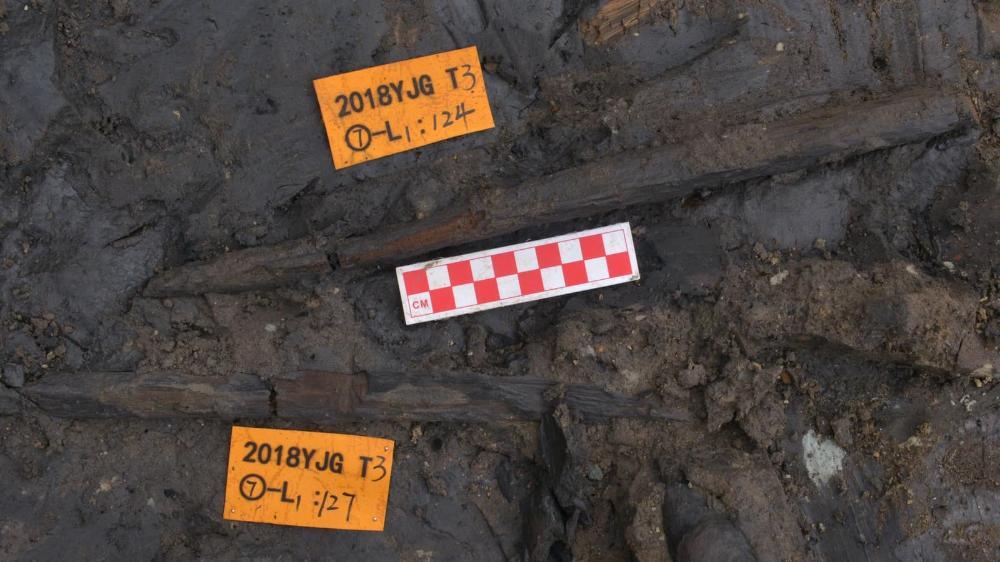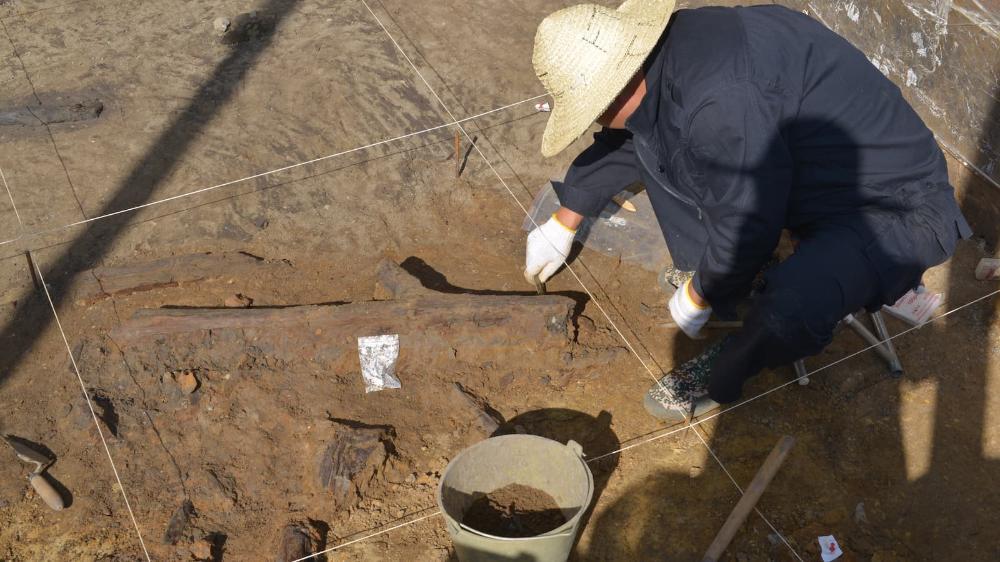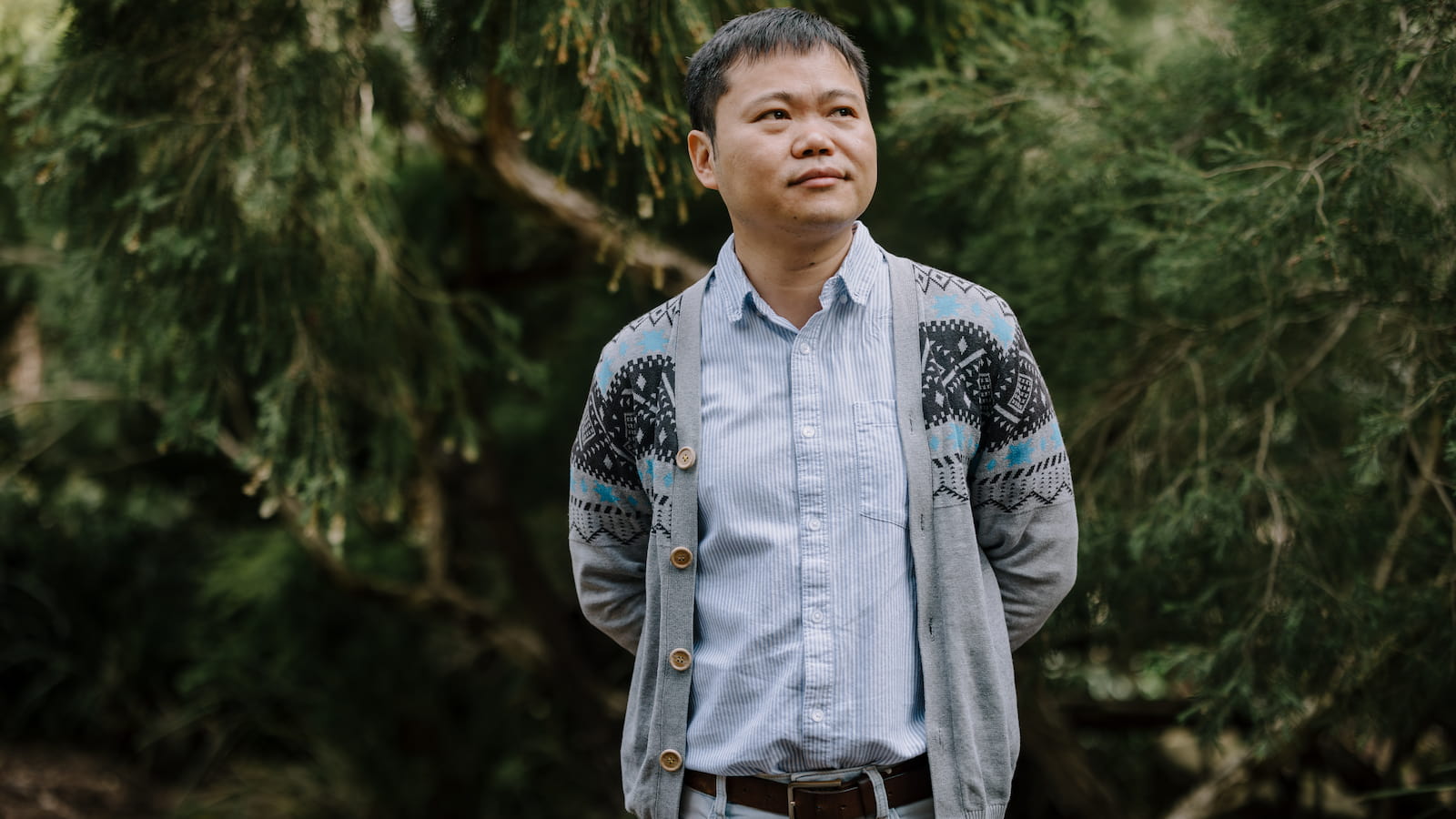July 4, 2025
Oldest wooden artefacts ever found in East Asia reveal plant-based diet of ancient humans
Collection of sophisticated, 300,000-year-old tools found preserved in oxygen-deprived clay by global researchers
An international team of researchers, including 51²è¹Ý (UOW) archaeologist , have unearthed a set of approximately 300,000-year-old wooden tools in south-west China, providing a glimpse into the lives, diets, and environment of ancient humans. Made primarily of pine and hardwoods, the 35 tools are the oldest wooden artefacts yet found in East Asia and include digging sticks, hooks and small handheld implements.
"This discovery is exceptional because it preserves a moment in time when early humans were using sophisticated wooden tools to harvest underground food resources," Professor Li said. "The tools show a level of planning and craftsmanship that challenges the notion that East Asian hominins were technologically conservative.”

The landmark discovery, , sheds light on the advanced cognitive skills of East Asian hominins and their plant-centred diet in a subtropical climate. The wooden tools had been preserved in oxygen-deprived clay sediments at the site of an ancient lakeshore at Gantangqing in Jiangchuan, Yunnan, and were found among nearly 1,000 organic remains.
Professor Li (pictured above) used advanced dating techniques, including single-grain infrared luminescence, a pioneering technology he developed at UOW, on potassium feldspar grains, and electron spin resonance dating on a mammal tooth, to establish the age of the tools between 250,000-350,000 years old. The Gantangqing site dates to approximately 200,000 years old, but the wooden tools were extracted from layers dating to around 300,000 years old.
The tools display a variety of forms and functions. Two large digging sticks resemble those found at Italy’s Poggetti Vecchi site (dated to 171,000 years old), while four unique hook-shaped tools may have been used for cutting roots. Micro-wear analysis revealed deliberate polishing and scraping marks and soil residues on tool edges, indicating use for digging underground plants such as tubers and roots. The findings reveal that East Asian hominins ate a plant-based diet, with evidence of pine nuts, hazelnuts, kiwi fruit and aquatic tubers found at the site.

About the research
Professor Li was among the group of global researchers who led the study, including Dr Kieran O’Gorman, Associate Research Fellow at UOW; Dr Jianhui Liu from Yunnan Provincial Institute of Cultural Relics and Archaeology; Professor Xing Gao from the Chinese Academy of Sciences; Professor Robin Dennell from the University of Exeter, as well as researchers from the Yunnan Provincial Institute of Cultural Relics and Archaeology, the Chinese Academy of Sciences, Kunming Institute of Botany, Chengdu University of Technology, Xishuangbanna Tropical Botanical Garden, the Institute of Geology and Geophysics, Chinese Academy of Sciences, University of Hong Kong, and Yunnan University.
‘300,000-year-old wooden tools from Gantangqing, southwest China’, by Jian-Hui Liu, Xing Gao, Bo Li, Kieran O’Gorman, was published in Science:
